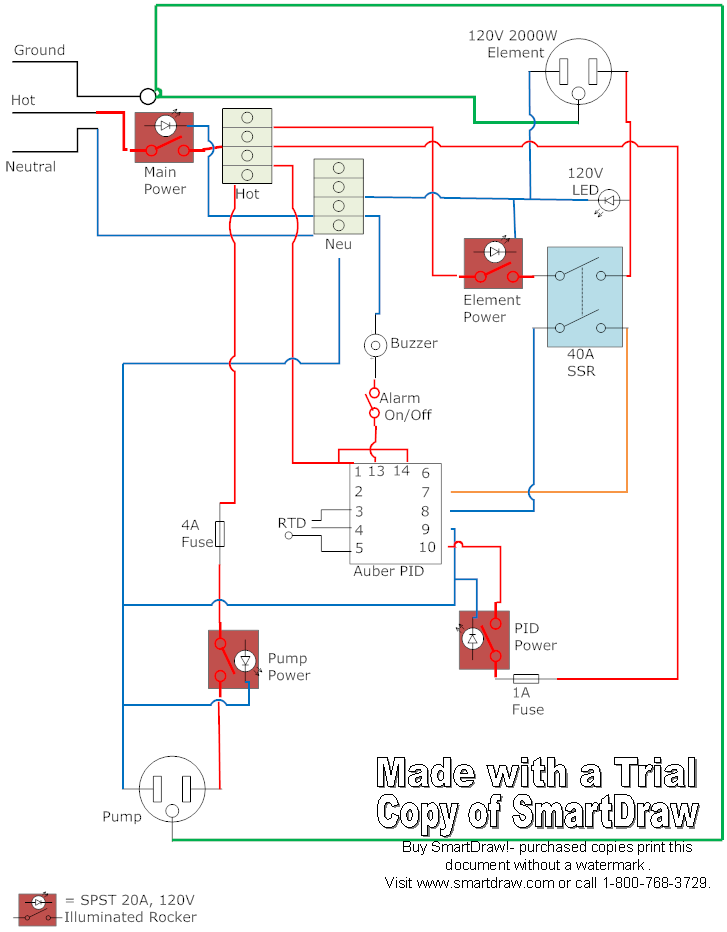BrothOfVigor
Well-Known Member
After months of scouring the forums for inspiration and insight, I've decided on a 120V, 2000W 3.5 gal rig. I have no intent of ever turning this into a 240V system, so I've sourced everything with that in mind. I've almost completed the kettle (thread on that later!) and am in the final stages of planning the control panel. I think I've gotten a pretty good grasp on things after tattooing some of PJs drawings on the inside of my eyelids, so here is what I've come up with:
First, the list of desired features:
1) Main power switch instead of an e-stop.
2) PID power on/off (Auber)
3) Pump power on/off
4) Element (via cutting power to the SSR [Auber]) power on/off
5) Element indicator light (120V LED, Post SSR output)
6) PID Alarm on/off (using an internal piezo instead of the auber panel mount)
The diagram (rat's nest) below uses 20A 120V illuminated rocker switches for the main power and other components. The switch's LED shares the same line leg (not shown in diagram) and has a post for neutral (shown in diagram). Not all of the symbols may be legit, but I think they make sense

I hope I have interpreted the function of each component correctly. Does anyone see any problems or room for improvement? Please let me know if anything needs clarification!
Thanks for your help!
First, the list of desired features:
1) Main power switch instead of an e-stop.
2) PID power on/off (Auber)
3) Pump power on/off
4) Element (via cutting power to the SSR [Auber]) power on/off
5) Element indicator light (120V LED, Post SSR output)
6) PID Alarm on/off (using an internal piezo instead of the auber panel mount)
The diagram (rat's nest) below uses 20A 120V illuminated rocker switches for the main power and other components. The switch's LED shares the same line leg (not shown in diagram) and has a post for neutral (shown in diagram). Not all of the symbols may be legit, but I think they make sense

I hope I have interpreted the function of each component correctly. Does anyone see any problems or room for improvement? Please let me know if anything needs clarification!
Thanks for your help!


